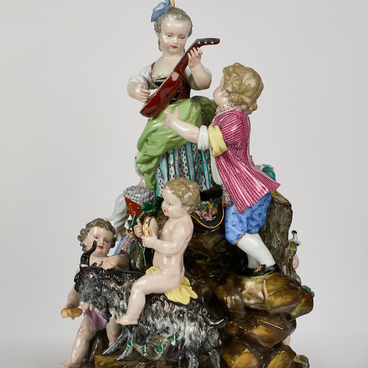In 1704, the German scientist and chemist Johann Friedrich Böttger began trying to find a formula for making the legendary philosopher’s stone and unravel the secret of turning simple metals into gold. After several years of unsuccessful attempts, he still could not obtain gold. Instead, together with the chemist Walther von Tschirnhaus, he created a recipe for snow-white translucent porcelain.
Its discovery made quite a splash. Elector of Saxony Augustus II the Strong valued the resulting material even above gold — the ruler was a great admirer of porcelain products. At that time dishes made of such fine white porcelain were imported to Europe from China and Japan. No wonder the porcelain brought from the East was called “white gold” in Europe — it was very expensive, and no master prior to Böttger could unravel the Chinese secret of the fragile material.
In 1710, by order of Augustus II the Strong, the first porcelain factory in Europe was founded at Albrechtsburg Castle in Meissen, a few miles north of Dresden.
Every master who worked at the factory in Meissen brought something new to the table. For example, when Johann Joachim Kändler became the head of the modeling workshop, porcelain painting faded into the background, again becoming decorative, and the main emphasis was put on the shape and modeling of porcelain. Smooth curves and ornate shapes were characteristic of the raging Rococo style. Kändler not only added many decorative elements to the tableware, but also created a number of sculptural compositions and collections.
Rococo style was replaced by Classicism, which brought with it the fashion for strict forms and simpler décor. The Frenchman Michel Victor Acier was invited to work in Meissen in 1762. He changed the approach to porcelain production in many ways. For some time, Acier worked under Kändler and, as his student, adopted the technique of making porcelain and left his mark on the choice of décor and painting. The characters of his porcelain compositions were “dressed” in accordance with the fashion trends of the 18th century, and the statuettes themselves, which were very popular in society, depicted funny scenes, touching upon both morality and amorous intrigue.





